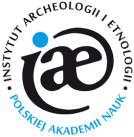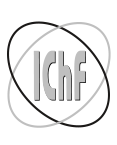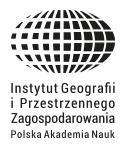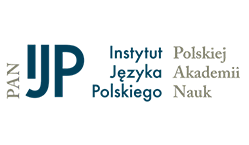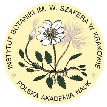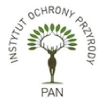
- The 1989 fall of the Iron Curtain marked the beginning of new economic, socio-cultural and political realities for the former socialist states in Central and Eastern Europe. Along with the economic restructuring from statecentralised to market economy, democratisation and liberalisation initiated a transformation of the socialist urban space, which was characterised by the changing role of its iconic landmarks. This conceptual paper examines these post-1989 changes, which range between the removal of these landmarks and their transition into market led iconic and flagship attractions. The paper identifies the changing role of tourism from a topbottom orchestrated to a market led activity, which explains the transformation of some of these landmarks. It introduces a new framework for studying this process by suggesting that iconisation, de-iconisation and re-iconisation processes are interrelated to other strategies and approaches to the transition of the socialist urban landscape into a western market economy. The paper identifies avenues for further research and provides some recommendations for improving the management of similar processes.
- A basic research topic taken up within the framework of border studies concerns the function of political borders, as well as changes therein over time. As a matter of special importance is then the location of border crossing points and the character of their immediate surroundings, much depends on the analysis of transformations these areas undergo, in line with shifting formal and legal circumstances, as well as in terms of infrastructure and socio-economic conditions. Poland’s 2007 accession to the EU’s Schengen Agreement obviously had a number of major consequences in this respect, not least along the Polish-German border where border posts underwent formal liquidation, and the border could theoretically be crossed along its entire length. The rules applying to an internal Schengen border are known to favour spatial development in border areas, as permeability increases and there may be a long-term trend for the role of a border as a barrier to decline. Notably, the local dimension would seem to be of great importance to the achievement of practical effects (Bufon, 2008). The work detailed here has had as its main aims the identification of the spatial--development features characterising crossings along the Polish-German border, and the analysis of economic activity in their immediate vicinity, under the circumstances of a now-open internal border within the Schengen Area. The analysis covered areas surrounding the formal border crossings abolished on 21.12.2007, as well as new places in which organised crossings began to take place (along roads, walking or cycle paths or railway lines). This scope of interest led to a field inventory of 47 areas on both the Polish and German sides, at which a border crossing was made possible by roads (n = 29), or along cycle or walking paths (n = 18). Data obtained allowed for an identification of key regularities as regards the maintenance of border infrastructure, the reuse of the buildings of former border posts, road infrastructure, and numbers and type structure where operating companies were concerned. The newly-created border-crossing points were mainly seen to locate along the section of border between Pargów and the coast of the Szczecin Lagoon, as well as in the Świnoujście area (where the boundary does not run along rivers).Interestingly, use was being made of only half the former border-post buildings, on both the Polish and German sides. Where new designations of activity were present, a degree of diversification was visible. Our results show clearly how difficult it may still prove to introduce new functions in the reality of an open, internal Schengen Area border. The study offers grounds for a perhaps-surprising conclusion that, given the conditions under which the Polish-German border still functions, a formal status as open does not preclude significant limitations still being imposed on the possibilities for borderland integration, in a spatial context in particular.
- A central strand of research work in the realm of urban physics aims at a better understanding of the variance in microclimatic conditions due to factors such as building agglomeration density, anthropogenic heat production, traffic intensity, presence and extent of green areas and bodies of water, etc. This research has been motivated in part by phenomena associated with climate change and urban heat islands (UHI) and their implications for the urban microclimate. Note that the characteristics and evolution of the urban microclimate is not only relevant to people’s experience of outdoor thermal conditions in the cities. It can be argued that the solid understanding of the temporal and spatial variance of urban microclimate represents a prerequisite for the reliable assessment of the thermal performance of buildings (energy requirements, indoor thermal conditions). In this context, the present paper entails a three-fold contribution. First, the existence and extent of the UHI phenomena are documented for a number of Central-European cities. Second, a number of variables of the urban environment are identified that are hypothesized to influence UHI and the urban microclimate variance. These variables, which pertain to both geometric (morphological) and semantic (material-related) urban features are captured within a formal and systematic framework. Third, to support the process of design and evaluation of UHI mitigation measures, the potential of both numerical (simulation-based) applications and empirically-based urban microclimate models are explored.
- A comparison between errors associated with snow-cover reconstruction performed by processing aerial imagery acquired by a visible-light camera mounted on board unmanned aerial vehicles, one the one hand; and average terrain roughness, on the other, revealed a dependent relationship between these variables. A stronger correlation is noted for two of the studied test areas (Polana Izerska and Krobica, both located in SW Poland), as opposed to the remaining site (Drożyna, SW Poland). In particular, correlations are noticeable where the analysis is performed in moving windows. It is typical for terrain where depth of snow cover is reconstructed with severe errors to reveal a high degree of roughness caused by single trees, clumps of trees or buildings. Ambiguous results are obtained for the Drożyna research field. While the character of the dependent relationship there seems consistent with results for the remaining sites, the strength is low. The lower values for the correlation coefficient were driven by observations for which errors were found to be high while values for the Topographic Ruggedness Index were at the same time low. This effect can be explained by reference to the specific nature of the area reconstructed, which is much transformed by human activity. It proves difficult to reconstruct the depth of snow cover on roads properly, as these are either partially cleared or snow or characterised by its loss in the course of melting. Low thickness of snow cover is thus found to be a constrained when it comes to the generation of accurate reconstructions of the depth of snow cover. This is in fact a finding in agreement with what has been reported by other authors.
- A comparison was done of the timberline course from the mid-20th and beginning of 21st century, in Mengusovská Valley (Slovakia) and Rybi Potok Valley (Poland). These are two valleys in the High Tatra Mts. Aerial photosand satellite images were used to assess the changes of the timberline in the two valleys. The course of the timberline ecotone in both valleys is similar. In both valleys, the stable timberline section is almost half of the totaltimberline length. In both valleys there has been an increase in the elevation of the timberline (on average by 10 m in the Mengusovská Valley and 15 m in the Rybi Potok Valley), and free spaces have been increasinglyclosing up. The progressive changes of the timberline are mainly due to the limit placed on human economic activity, and to climate warming. Inactive avalanche paths have led to an enlargement of the forest area in bothvalleys. The reduction of avalanche activity is the direct result of climate warming in the Tatra Mts. and from the decrease in the amount of snow in winters.
- A considerable number of measures taken under the Rural Development Programme have to be objectively and reasonably justified. These stem from strategic administrative decisions based on the results of analyses of complex natural, economic and demographic processes occurring in rural areas in time and space. Due to increasing functionality of the Geographical Information System (GIS) and wider availability of spatial information, the GIS databases and geospatial analyses are now the basis for solving spatial problems in the implementation of the Rural Development Programme. The aim of the study was to identify the features of rural areas in the Dolnośląskie Voivodeship (Lower Silesia Province) based upon selected components. For this purpose digital databases were employed. These are particularly relevant for sensible and sustainable rural development. With the use of the Corine Land Cover (CLC) database, the analysis concerning diversification of land cover and land use in the rural areas of the Dolnośląskie Voivodeship was carried out. Basing on the Digital Elevation Model (DEM), the terrain relief and land slopes were examined. By the means of soil and agriculture database, the analysis of spatial diversification of soil suitability was also performed. Moreover, with the use of the Polish Central Statistical Office databases, the spatial diversification of selected economic and demographic components in the analyzed area was evaluated. The analyses provide geo-visualizations, i.e. digital models presenting high spatial diversification of rural areas of the Dolnośląskie Voivodeship. The spatial diversification results from the high physiographic variability of this area. It should be stressed that the models are very practical and essential for the Rural Development Programme to be implemented by the authorities responsible for protection and rural development.
- A detailed analysis was performed of precipitation data from the years 2011-2013 collected from 17 stations in the city of Łódź over six days with the highest six-hour precipitation periods. Each day was analyzed in respect of the synoptic conditions affecting the weather, with particular emphasis placed on moisture conditions. The highest precipitation was recorded during the May to August period. The convergence of thermally contrasting air masses and significant amounts of water vapor transported to the area of Central Europe were the main cause of extreme precipitation in the area of Łódź. During the advection of warm air masses, the significant amount of water vapor in the air originated not only from the warm sea basins, but also from evapotranspiration during the air masses travelling over hot land areas. A high content of precipitable water during heavy precipitation events was reported in the area of Poland and its neighborhood.
- A digital photography and three-dimensional models were used in order to create a reconstruction of one of the oldest and most unique wooden Ukrainian churches, located in the village of Potełycz in Roztocze, as well as the church in Beniowa in Bieszczady that within years has vanished, and tombstones on the cemetery in Stare Brusno in Roztocze. Three-dimensional reconstruction techniques have been also analyzed with regard to landscape surrounding of those sacral objects. The three-dimensional reconstruction of the church’s interior and exterior on the basis of terrestrial photogrammetric is the most effective method of examining possible changes in its structure. The paper presents specificity of using digital photography and 3D technology for the purposes of rebuilding the churches, tombstones on cemetery and the surrounding cultural landscape elements. A model of specific plants was also created by implementing 3D technology. Using a number of digital modeling methods, the taken photographs were combined in order to find the most effective method of reconstructing the church’s interior and exterior along with its their surroundings. Appropriate use of all these methods ensures optimal results and preservation of the sacral objects in the future.
- A key feature of contemporary tourism is massive investment on the part of developers in tourism-related urbanisation, with this made most manifest in the construction of recreational apartment houses, and the expansion of ski slopes and golf courses. For obvious reasons, such activities are directed at traditional centres of tourism, which respond to the current trend towards hedonism present in society. However, major development activity has also taken place in municipalities in which tourism only began to play its more significant part once social and political transformation had already occurred. An example is the Slovak municipality of Veľká Lomnica, a village in which golf-course construction has initiated large-scale development projects. The aim of the work described in this paper was precisely to address this example in assessing the impact of tourism-related urbanisation on the municipality in question.
- A number of investigations have recently been devoted to the issues of inequalities in the international academic discourse. Hardly any of them concern, though, scholarly publishing practices and the actual utilization of the scientific output of non-Anglophone geographers, especially those from regions undergoing a neoliberal turn in the management of tertiary education and science. The following article aims to partly fill the gap through a close bibliometric analysis of the participation of researchers from East-Central Europe in international human geography. The investigation makes use of information about articles published in 48 geographical journals indexed in Web of Science. The results of the examination reveal that the share of researchers from East-Central Europe in the international geographical discourse is rather inconsiderable. The geographers struggle with the following problems: (1) publishing in a limited group of periodicals (concerning mostly the issues of Europe) coupled with a dearth of publications in important American and British societal journals as well as the ones of a more radical orientation; (2) infrequent citations of their works as compared to those of Anglophone and Western European researchers. All this is accounted for, inter alia, by (1) the negative impact the socialist period had on the development of social sciences, (2) a poor command of English, (3) a research focus on well-established and ‘safe’ themes as well as (4) the mechanisms of the Anglophone dominance in science. Giving all these handicaps careful consideration, the authors formulate the idea of doublepublication policy aimed at ameliorating the discussed problems.
- A process of reurbanisation associated with the resurgence of inner-city housing has been observed in Western Europe since the 1980s. Nowadays this trend is not only seen in large urban areas but also in the medium-sized towns and cities of Eastern Europe. However, there is still a lack of empirical research on the spatial variation of the population change within such cities. This paper explores the process of reurbanisation in the city cores and its underlying dynamics against demographic changes, using the city of Kraków (Poland) as an example.
- A recent survey concerns the use of the place-based approach to territorial development throughout Europe.Places, according to the Barca Report, are drawn as frames which are irrespective of political boundariesfor integrating policies with spatial impacts. For this very reason, they are also a no-man’s land each in thesense of no one government being responsible. Where does this leave the democratic legitimacy of placegovernance? The question may also be asked whether territorial representation is the only way of producinglegitimacy in a network society. Raising the issue is certain to meet with opposition, especially since alternativesare anything but clear. The epilogue discusses Europe as a place and reflects on European governance.
- A solid international legal framework for family planning supports national family planning programs. Yet it is not by itself a program guarantee, especially among Muslim nations, many of which have stalled FP transitions and weak or absent government assistance for FP programs. The success of Iran’s family planning program, therefore, is all the more noteworthy. Since its establishment in 1993, it has been one of the most successful state family planning (FP) programs in the world, having reduced the national annual growth rate from 2.7% in the late 1960s to little over 1% currently. This paper explores international and national legal, institutional, demographic, and cultural-geographical influences that may have contributed to its results.
- A synthetic assessment of the equipping of Poland’s voivodships with road and railway infrastructure was conducted to identify needs, as well as future action to be taken as regards infrastructure development. Reference was made to two main approaches to assessment: one providing econometric estimates of infrastructure productivity, where transport infrastructure equals public capital in production functions; and the other analyzing changes in regional road and rail accessibility. This paper in fact presents an indicator incorporating both the quantity and the quality of road and rail infrastructure, with two widely-used density indicators relating to population and area being applied. A third indicator including both population and area was also taken into account. A comparison of Poland’s voivodships was made on the basis of the results. Particular attention has been paid to operational work on the state road network and train operations. Traffic intensity was found to vary markedly between voivodships, and this should be the main reason to improve the degree to which given areas are equipped with road and rail infrastructure. It is concluded overall that the shares of operational work regions account for correlate strongly with the shares of GDP they take. Priority should thus be given to investment in voivodships displaying the highest level of operational work, in particular centrally-located regions. The second goal of the investment policy should be attained via investments in the regions of highest GDP growth, because operational work is probably going to be higher there as well. Eventually, infrastructure should also be improved in regions where the needs as regards operational work are less urgent, e.g. in south-eastern Poland – an area that unfortunately suffers from poor transport infrastructure. The conclusion is nevertheless that asymmetrical investments leading to greater differences in equipping with infrastructure from region to region do represent the best solution for Poland at this time.
- Accessibility is widely used term and plays an important role in many scientific fields. It determines the advantage of one location over the other. Although there are different measures and number of studies on accessibility in the world literature, there are relatively few so far in Poland at the national level. The purpose of this article is to present some results of ongoing research that have been carried out at the IGSO PAS in 2007 and 2008. The projects led to development of methods of calculating time accessibility and the multimodal potential accessibility indicator of the area of Poland. The time accessibility is measured by using the isochronic-based and distance-based accessibility measures. The multimodal potential accessibility indicator is meant to be utilized, for evaluating the possible effects of construction and modernization of the transport network that are envisaged in the EU supported operational programs. The measure may be calculated separately for carriage of goods and passengers, the 16 voivodships (provinces of Poland) and four modes of transport (road, railways, inland waterways and air).
- Accessibility of public services constitutes an essential element, defining the level of development of a given region and the standard of living of its inhabitants. The present report attempts to shed light on the spatial accessibility to services in the local dimension, with consideration of the important factor, constituted by the development of road infrastructure, which, side by side with economic advantages (enhancement of competitiveness and attractiveness) and improvement of accessibility, should also bring social effects, in particular – increase of spatial mobility and improvement of the overall living standards and the quality of life (Domańska, 2006). The significance of the development of road infrastructure and its influence on the changes in potential accessibility have also been analysed.
- According to the regional division from A. Chałubińska and T. Wilgat (1954), the Łęczna-Włodawa Lake District, is a subregion of Lublin Polesie – the western part of the extensive Polesie Lowland. More broadly, the area is located within the zone of the European Lowland, bordering on to the Lublin Upland in the south and the “Włodawa Hump” in the north. Other boundaries are formed by the valleys of the Tyśmienica in the west and the Bug in the east. The total area of the Łęczna-Włodawa Lake District is 1168.5 km2. This is a region of unique natural features. The shallow location of groundwater, extensive areas of wetlands and peatlands, natural lakes and artificial reservoirs all have special signifi cance for the character of the natural environment here. Despite the visible wealth of surface waters, this is an area of severe water deficits resulting from low precipitation and natural water-retention conditions. The main purpose of this study is to analyse the state of, and changes in, water conditions as the result of various impacting human activities. A description of the hydrosphere resources in the Lake District, and the ways in which they have been modified, was developed on the basis of material at the Department of Hydrology of the Maria Curie-Skłodowska University in Lublin, meteorological data from the Institute of Meteorology and Water Management – National Research Institute, information obtained from the Voivodship Board for Land Reclamation and Water Facilities in Lublin and the “Bogdanka” Lublin Coal Company, Inc. Water is the most important component determining the valuable features and specific environment of the Łęczna-Włodawa Lake District. Natural water exchange is very slow here, and the limited resources, retained underground, are of a very good quality. Connections between lakes and basins without drainage to one system of outflow result in an acceleration of spring runoff, causing a decreasing in the area of permanent wetland and a change in the hydrodynamic balance between surface and ground waters. A higher rate of withdrawal and abstraction of groundwater for municipal and industrial purposes, and consequent greater flow of water through the system of reclamation ditches have led to a slow process of lowering of lake and groundwater tables, with the result that lakes become overgrown. Mining activity caused changes in surface and underground alimentation areas for lake catchments and lakes. Minewater discharge and the washing out of waste rock landfill by rainfall causes an input of more-mineralised waters, as is especially visible after their discharge into the receiving water the Świnka River. Water conditions in the area under study have thus been subject to change as a result of other economic activity, mainly land reclamation, the exploitation of aquifers, coal extraction and the use of land in recreation. The effective protection of water and other natural resources in the Łęczna-Włodawa Lake District – as an area unique in Europe – demands rational management and protection activity. Water as the most important component of this lacustrine-palustrine region should therefore be treated preferentially.
- Across Europe, the current system of waste management is responsible for environmental pollution, leading to the need of a transition towards a circular economy model, and towards systemic approaches for achieving sustainable objectives. Interpreting waste as resource – through the development of eco-innovative solutions – can play a positive impact on the quality of life and of the environment. REPAiR1 research project proposes eco-innovative strategies, in order to co-design and assess solutions, involving a series of decisional problems that require the development of Spatial Decision Support System, described in their general structure and with a focus on the REPAiR project.
- After 10 years of Poland’s accession to the EU, the CAP instruments have strengthen the development of merchandise agricultural households, adjusted them for managing environmental functions and have initiated the process of adapting to the knowledge based economy. The paper attempts to determine the impact of CAP and its institutional environment on the development of merchandise agricultural households in Opole region. The study was conducted with the method of questionnaire interview addressed to supervisors of the above mentioned households located in the representative agricultural areas of Opole region. Based on the research conducted in 2008 and 2014 it has been stated that further transformation processes concerning rural areas will depend on the “implantation” in the social networks of farmers in the existing, implemented institutional environment and on the estimation of impact they exert on changes in agricultural households on different levels of their functioning.
- After 1989, elites, considered as main winners of the politico-economic transformation, commenced to seek for a dwelling corresponding to their social status and allowing them to stand out from other social groups. In Warsaw, despite some resemblances in their residential trajectories, preferences and choices, the different profiles within the group of elites may be distinguished. This article attempts to go beyond the classical differentiation of elites by their occupation and proposes an original typology of elites regarding socio-economic, demographic and residential characteristics, life styles as well as residential preferences. The diversity of the elitist housing has become one of the components of the process of distinction between different fractions in the group of elites.
- After EU enlargement and its approaching to the Ukrainian borders, the development of cross-border cooperation with neighbor countries–members of EU has become extremely important. The integration processes shift from national to the regional and local levels. The Ukrainian-Polish cross-border cooperation should be aimed at: the intensification of European integration due to the development of the long-term Ukrainian-Polish relations on the innovative basis; the elimination of the institutional obstacles for the structure changes in Ukrainian economy by means of the implementation of the European standards of economic activities; the providing of the maximum possible mobility of technologies, capitals, labor, goods and services; the coordination of strategic programs for boundary regions development in order to enhance their competitive advantages. The cross-border cooperation is restrained by the barriers, such as: political, economical, infrastructural, legal, organizational, social. The current state of the Ukrainian-Polish cross-border cooperation shows that both in Poland and Ukraine there is a need for assuming the complex political, economical, technical, organizational and ecological measures which have to minimize the negative exposures of existing barriers. The boundary situation of regions should be taken as an advantage for social-economy development that has to facilitate the transit potential of the border territories.
- After more than two decades of attempting to redevelop the inner city of Johannesburg, it is still perceived by scholars, the popular media and the general public as a crime-ridden area of decay. This paper looks at a public transport system, as well as the redevelopment of parks and the provision of housing in the inner city. The Rea Vaya BRT serves as the ’backbone’ for the redevelopment strategy of the City of Johannesburg’s ’Corridors of Freedom’ which aims to mitigate inequality in the city. This research analyses the success and shortcomings of the BRT system, as well as the redevelopment of inner city parks and the provision of housing for the poor in the inner city and along these development axes. Although large amounts of money have been allocated to the redevelopment of the inner city parks and to tracts of land along these so-called Corridors of Freedom, these parks are still proving to be user-unfriendly owing to a lack of maintenance. Although the redevelopment projects appear to be worthy attempts to improve the inner city of Johannesburg these have as yet not proved themselves to be very effective.
- After the fall of the Iron Curtain, CEE cities (as well as other cities in the former Socialist Bloc) experienced dynamic development in many areas. The presented article deals with one of the key areas of the post-socialist transformation of the city, specifically the humanisation of mass housing in large housing estates. These housing estates from the central planning period still dominate the skyline of many CEE towns. At the beginning of the 1990s, housing estates suffered from a number of shortcomings that needed to be put right within the frame of their humanisation. The paper analyses a more than two decade-long process of housing estate humanisation which gradually led to the replacement of the monofunctional (strictly residential) model with a multifunctional model. This leads to improvement of civic amenities, implementation of new urban-architectural solutions and the creation of new job opportunities. As a result, these changes increase the quality of life in housing estates, both from an objective and subjective point of view. Changes in the spatial, social, economic and physical structure of housing estates after 1989 will be analysed using examples from hierarchically different locations in the Czech Republic. The synthesis of findings will be supplemented with the results of empirical studies that were carried out by geographers, sociologists and urban planners.
- The agricultural abandonment and reforestation taking place over the last few decades in the Carpathians has led to accelerated transformation of pasture landscape. The trajectories of pasture landscape changes, the factors threatening and supporting the pastures’ traditional use have been established on the basis of archival and contemporary cartographic materials, historical scientific works and archival photographs. An attempt has also been made to assess pasture landscape durability. The major part of the former pasture landscape has evolved into forest or settlement landscapes. The pasture landscape durability will only be possible if the operations supporting the traditional mountain grazing are continued.
- Agricultural land is declining in many mountainous regions of the world, often because political and economic changes make agriculture less profitable. This study compared the structure of land use in the Homerka catchment, an area of 19.3 km2 located in the West Polish Carpathians, using GIS techniques and cartographic materials between 1977 and 2009. This period covers the transformation of the Polish economy from a communist system to a free-market economy after 1989. The analysis indicates an increase in the forest area of the Homerka catchment by 18.14% and a decrease of cultivated land by 82.64%. The grasslands did not change significantly in their area, however, their spatial pattern was very dynamic related to their reduction due to forest expansion and enlargement due to cultivated land abandonment. The area of buildings revealed a continuous increase from 0.21% to 0.38%. The population density increased from 62 people/km2 in 1978 to 79 people/km2 in 2009, while the population dependent on agriculture decreased from 35% to below 20% in the same period. The trend remains one of forest transition where, after a period of deforestation, large areas of land marginally suitable for agriculture are abandoned and left to forest regeneration. However, the driving of the labour force from agriculture to other economic sectors is not accompanied by migration from rural to urban areas.
- Agricultural production is subject to continuous economic and structural changes. Since the 1990s economic and organizational factors have exerted greater influence on agricultural production than environmental conditions. An important determinant affecting farming production was Poland’s accession to the EU, where agriculture was covered by Common Agricultural Policy. Proportion of plant products does not go directly to the market; it is processed on farms into animal products. At the same time, however, what has been developing for years are unfavorable relations between crop and animal products. The reasons for this state of affairs are complex. One of the ways to improve the results of agricultural production is specialization. This is quite a broad concept, embracing the research issue concerning agricultural production structure and directions of agricultural production, especially regarding commercial production which are defined in literature as directions of agricultural specialization (Kulikowski 2003). The aim of the study is to present changes in the regional specialization of crop and livestock production taking place in Poland in the years 2004‑2019. An attempt was made to answer the question in which agricultural production does a given region specialize and to what extent? The following research hypothesis was adopted: changes in the specialization of agricultural production in the regions are influenced by farmers benefiting from direct payments and other forms of financial aid under the Common Agricultural Policy. For the research on the regional specialization of agricultural production, the location quotient based on the share of crop and livestock commodity production in commodity production was used. The location quotient, apart from providing a static picture of the situation for comparative analyzes, allows for comparisons with regard to the dynamics of the specialization index, and to indicate differences in the dynamics of changes in individual agricultural production specializations. In the investigated period, crop production which is more dependent on climate conditions than animal breeding was much more diversified (changed over time). Western voivodships achieved a high level of specialization in plant production. It resulted from the agrarian structure of these regions, where large farms dominated. The lack of specialization in plant production was typical of the following voivodships: Podlaskie, Warmińsko-mazurskie and Wielkopolskie. With regard to animal production, the situation was different. The share of commercial animal production in the general commercial output was primarily affected by an apparent increase in the share of commercial milk production. This concerned north-eastern voivodships: Podlaskie and Warmińsko-mazurskie, which specialized in beef production as well. Wielkopolskie Voivodship also reached a high level of specialization not only in beef but mainly in pork production.
- Agriculture has been the major driver of deforestation in Europe in the last 1000 years. In the past, forests were also exploited for charcoal production; however, the spatial scale/extent of this activity and its impact are unknown. LIDAR data can be used as a noninvasive tool to investigate the small-scale diversity of the land relief, including forested areas. These data can reveal the extent anthropogenic modifications of topography present-day as well as in the past. One of the activities that can be analyzed based on LIDAR data is spatial distribution of charcoal production. A preliminary LIDAR data analysis indicated the intensity of this practice and its potential impact on the natural environment. This prompted us to analyze the environmental impact of charcoal hearths in northern Poland. As it turned out, this topic exceeded the scope of earth sciences and became a transdisciplinary one. In this work, we will use the research methods typical of biogeography, dendroecology, paleoecology, soil science, biology, botany, history, onomastics, as well as art history, in order to thoroughly understand not only the natural consequences but also the social and economic consequences of charcoal production. This paper presents the assumptions of our project, the research methodology, and the preliminary results. We have identified using LIDAR data more than 73 thousand relief forms which can be remnants of charcoal hearths. Our preliminary results confirmed large scale impact of past human activity related to charcoal production and suitability of the methods used for detecting and reconstructing charcoal hearths as well as determining the distribution and magnitude of past forest use for charcoal production in NW Poland.
- Agriculture is a sector of the national economy strongly influenced by climatic conditions. A majority of jobs in agriculture are still performed outdoors, under various weather conditions. Several meteorological situations can lead to severe disturbances in the organism of agricultural workers, with high temperature, intensive insolation and elevated air humidity proving especially dangerous, as such weather conditions can lead to overheating and dehydration of the body. The work presented here compares biothermal conditions in Poland and Bulgaria from the point of view of occupational health. To this end, use was made of several indices assessing heat stress in human beings, namely: Wet Bulb Globe Temperature (WBGT), HUMIDEX, Water Loss (SW), Universal Thermal Climate Index (UTCI) and Physiological Subjective Temperature (PST). When account was taken of the occurrence of heat extremes as defined by these indices, it proved possible to distinguish categories of health risk regarded as small, increased or great. Comparison of the two agricultural regions reveals significantly more severe heat stress in Bulgaria than in Poland, in terms of both the frequency of heat-stress episodes and the number of hours (daily and monthly) associated with heat stress. This ensures that dangerous conditions for agriculture workers are primarily present in Bulgaria, rather than in Poland.
- Agriculture is a very specific sector of the economy, significantly different from other economic activities. One of the main distinguishing characteristics of agricultural production is its nature and strong dependence on the environmental conditions. These conditions determine to a large extent, the nature of agricultural production and its structure (crop/animal). The accession of Poland to the EU in 2004 and access to EU funds (subsidies for farmers under different EU programs) often were the cause of change in the current profile of farm activities. Therefore, it seems reasonable to examine the changes in the specialization of agricultural production in Poland after 2004. The aim of this study is to answer the following questions: (1) Is there (and if, how strong) concentration of each of the main types of agricultural production in Poland, (2) What is the nature of this production in selected spatial units. The analysis was conducted based on data on the volume of commodity agricultural production in years 2004–2014, the data used in the study was derived from the Local Data Bank of the Central Statistical Office in Poland. Specialization was determined using the Krugman index of regional specialization.
- The aim of our study was to determine the nature of the relationships among the characteristics of earthworm assemblages, selected soil properties and the degree of landscape fragmentation against seasonal changes. The study area was located near Rogajny in the Suwałki Lake District, where 54 permanent study plots were established in a homogeneous field (Dd) and in a mosaic of small fields and balks (Dm). The earthworms were collected in spring and autumn over a two-year period (2007–2008), from blocks of soil measuring 25×25×30 cm. Soil samples were collected from the same sampling points as the earthworms. Both, qualitative and quantitative parameters of earthworm assemblages showed the same trends, thus appearing to be equally reflective. The complex arable landscape site supported higher earthworm diversity, abundance and biomass than the homogeneous arable landscape. The spring and autumn earthworm sampling campaigns revealed very different patterns. We conclude that species richness is determined mostly by spatial structure of agrocenosis mosaics, whilst abundance and biomass of earthworm community is mainly influenced by soil conditions. Comparisons between data and formulating conclusions should be made with great care, as these relations depend on the temporal scales to a large extent.
- The aim of our work to describe the plant cover in the area of the river Warta’s inflow and discharge into the Reservoir. To the above end, field studies were conducted along 6 transects (10 m wide and 513 to 2416 m long, depending on the influence of surface waters) intended to reveal abrasive, accumulative and stabilised impacts of water. Różnorodność roślinności i dynamika procesów sukcesyjnych związanych z aktywnością wód powierzchniowych wskazuje na potrzebę dla ochrony prawnej nie tylko ptaków, ale także siedlisk. Obszar ten dobrze ilustruje zjawiska związane z działalnością dużej rzeki, z różnorodnością roślinności kolejno seria tego rodzaju, której nie można już znaleźć pod tamą Reservoir.
- The aim of the analysis presented here has been to describe long-term variability in air temperature in Poland over the 1951-2010 period. Certain spatial aspects have also been discussed. In order to provide a representative and homogeneous temperature series, station data were averaged for 7 geographical regions of Poland, and for the country as a whole. The distinction drawn between shoreland, lakelands, lowlands, highlands, Subcarpathia, the Sudetes and the Carpathians is as adopted after Kondracki (2002). It takes account of such important factors underpinning spatial variability in temperaturę as altitude, relief, land use, and, indirectly (as a result of latitudinal distribution) also distance from the Baltic Sea and the amount of received solar radiation. In total, monthly average temperature values from 45 synoptic stations were used to calculate an area-averaged temperature for Poland (Table 1). Further study then entailed analysis of annual, seasonal and monthly series with a view to determining trends (at an adopted statistical signifi cance of =0.05), decadal average temperature variability, the longterm course to be noted for air temperature anomalies and the range of variability. The most signifi cant feature of the long-term (1951-2010) variability in annual air temperature in Poland is the statistically signifi cant increase that displays in every analysed region, with an average rate of change exceeding 0.2°C per decade (Table 2). At the seasonal level, an upward trend is to be noted for spring (+0.36°C/10 years) and summer (almost 0.2°C/10 years). In line with this, the decade 2001-2010 was the hottest in the analyzed period (Table 3, 8-10), with the exception of winter (Table 7), for which a slight decrease in average air temperature relative to the 1991-2000 period could be observed. When set against the whole 1951-2000 period, the rate of annual warming remains approximately constant though the summer-season contribution to the warming trendis clearly increasing, while the winter contribution is reduced. On a monthly basis, statistically signifi cant warming over the period is to be observed for February (by over 0.5°C/10 years – the highest rate for any month), during spring (i.e. in March, April and May), and in July and August. Analysis addressing the spatial distribution to the trend revealed that the highest rate of temperature increase is affecting northern Poland (the shoreland and lakeland belts) and the Carpathians, while the lowest rate of increases is to be observed for the highlands and the Sudetes. The long-term course of air temperature anomalies is dominated by short-term variability, which manifests itself in relatively large changes from year to year and with the occurrence of short warm and cold periods. However, where annual series are concerned there has been a noticeable run of warmer years since 1988 (Fig. 1), with only a few exceptions (e.g. 1996 and 2010). A similar situation applies to spring (Fig. 3) and summer (Fig. 4). Furthermore, the spatial cohesion displayed by air-temperature variability indicates that observed changes in thermal conditions in Poland are mainly driven by large-scale factor(s). Fluctuations in annual air temperature averaged for Poland do not exceed ±2°C. On the seasonal scale, variability range varies from 3.9°C in summer to 10.2°C in winter, while at the level of individual months the range is between 4.7°C in June and 16.3°C in February. Relatively small variations in air temperature characterisethe Baltic coast (the shoreland belt). Another feature of long-term air temperaturę change in Poland is that the values for extreme negative anomalies in winter are clearly larger than the positive ones. In the annual cycle, July is most often the warmest month (in 60% of the years during the 1951-2010 period), while the minimal average air temperaturę has most often been recorded in January (in 45% of years).
- The aim of the analysis was to compare physicochemical parameters and chemical composition of two groups of artificial reservoirs, mountain and lowland ones, characterised by different parameters and functions. Three mountain artificial reservoirs (Klimkówka, Dobczyce, Czorsztyn) located in the Upper Vistula basin (Carpathian Mountains in Poland) and three lowland reservoirs (Ivankovo, Verhnevolzhskoye, Vyshnevolotzkoye) located in the Upper Volga basin (Eastern European Lowland in Russia) were selected for the study. Data for the summer season in 2009-2013 were used in the analysis. Mountain reservoirs display high water concentrations of sulphates, chlorides and biogenic nitrates, and lower concentrations of ammonium and oxygen indicator in relation to lowland reservoirs. Similar concentrations of phosphates were noticed in both the mountain and the lowland reservoirs. The hydrochemical differentiation between the individual mountain reservoirs was small, and statistically significant differences only occurred for SEC. Greater differentiation of the hydrochemical parameters was found among the lowland reservoirs. Statistically significant differences were demonstrated with regard to SEC, Cl- and NO3-.
- The aim of the article is description of the concept and research of the smart city. Based on the review of international literature, the smart city idea is interpreted, indicating positive and negative aspects including the relationship between modern network technologies and the urban community. The smart city concept assumes the use of network infrastructure to improve the economic and political efficiency of resources and enable the development of urban areas. This development should be an intelligent and sustainable and should contribute to the improvement of the quality of life. The concept evolves over time and more and more attention is devoted not only to the technological infrastructure itself but also to its impact on urban communities. Questions are increasingly being asked about the impact of smart development on the improvement of human and social capital as well as on social polarization or social exclusion. Therefore, newer definition assumes that smart city is a city in which investments in human and social capital and traditional (transport) and modern (ICT) communication infrastructure fuel sustainable economic growth and a high quality of life, with a wise management of natural resources, through participatory governance. In this context different smart city schools can be distinguished. The scientific debate about the smart city concept covers not only issues related to the development of new technologies and solving problems of local communities, but also the impact of this concept on social and economic polarization. It can be noticed that in cities that undertake initiatives aimed at being called intelligent cities, on the one hand, the interests of residents and, on the other hand, companies implementing modern technologies, clash. The implementation of the smart city concept has its negative implications for urban development due to top-down management and the limited use of a bottom-up approach. For this reason, city residents should take an active part in the design, construction and management of cities.
- The aim of the article is to assess the role of local leaders in generating social capital in rural areas. The analysis is based on a study of Jeżewo commune (Świecki county, Kujawsko-Pomorskie province). The study attempts to answer the following questions: Which personality traits and social conditions determine the possibility of becoming a local leader? Which initiatives can provide the basis for building social capital in the countryside? What is the leader’s role in generating social capital in rural areas? The results of the research indicate that the role of the local leader in creating social capital consists in activating the society by initiating and moderating various projects aimed at integrating the local community, intensifying relations and constructing local identity. According to the study, shared passions and interests can be the pivot of such grassroots projects.
- The aim of the article is to characterize one of the forms concerning conflict management, i.e. overcoming the conflict, which appeared in the context of the schools liquidation in rural areas. The presented analyzes are based on the results of empirical research conducted among stakeholders of local educational policy in Poland from 2016 to 2018. The author focused primarily on the actions of local authorities (mayors) to overcome the social conflict arising from the planned liquidation of local schools. These activities concerned teachers who were the inspirers and leaders of the local conflict in the examined rural municipalities. The measures applied to teachers did not resolve the conflict (nor eliminated its causes) and appeared to be irrational from the economic point of view. Nevertheless, they helped to overcome the conflict and limit its negative consequences. The theoretical framework of the article is defined by the concept of social conflict developed by L.A. Coser and selected theoretical approaches towards conflict management.
- The aim of the article is to define the concept of territorial classification and typology, including classification and typology of spatial units, and to systematize the practical variants of the method, as well as to identify the possibilities of using functional structure as a research tool. It systematizes existing approaches of creating functional classifications and typologies and presents examples of their application in analyses to interpret and explain dissection of individual variables. The paper consists of two parts. In the first one the spatial unit classification has been defined and distinguished from related terms. Different classification of rural areas has been systemized using formal and methodological or substantive criteria. In the second part, diverse empirical examples of rural spatial units classifications regarding functional structure and their application have been examined in relation to above mentioned systematics.
- The aim of the article is to evaluate law regulations being in force in Poland regarding the participation of local communities in shaping the rural space in relation to the concept of ladder of citizen participation by S. Arnstein and the idea of collaborative planning. It has been assumed that shaping the space involves both establishing and defining borders of given areas, its planning with various degrees of detail (appointing development priorities, defining destination and land use), as well as planning and implementation of specific projects. For this purpose, 27 legal acts (laws and national regulations) have been reviewed. These documents outline the framework for the inclusion of society (including local communities) in shaping the rural space and the interpretations of legal provisions made by other authors have been implemented. Inspired by the concept ladder of citizen participation according to S. Arnstein (1969), a diagram was developed illustrating the degree of public participation guaranteed by the legislative system in shaping the rural space divided into categories, taking into account the role of local communities.
- The aim of the article is to identify the impact of agriculture on the economic and ecological rural space after Poland’s accession to the European Union. The EU membership has given significant impetus to the transformation of agriculture mainly in the industrial (farming) aspect due to implementation of the Common Agricultural Policy (CAP). This has led to deepening the process of deagrarianization of rural areas. With regard to the economic sphere, the author considered workplaces and sources of livelihood (income), while analyzing the ecological space, some indicators of environmental sustainability of agricultural holdings were employed. The Central Statistical Office data of Farms’ Structure Survey of 2005 and 2016 in a cross-section types of commune (rural, urban-rural, urban) comprised the factual material used. Agriculture loses in importance in the economic sphere, especially in urbanized communes. This has been indicated by a downward trend in the number of farms, especially those providing major agricultural income for the maintenance of the farmer’s family, as well as engaging decreasing labor resources in agricultural activity. In respect of the ecological sphere, changes are heterogeneous. On the one hand, the progressive farmerization of agriculture intensifies the adverse nature of concentration and specialization in production. On the other hand, agricultural production based on scarce minerals helps to improve economic sustainability. There is an increase in environmental-friendly agricultural practices in connection with the ecosystem functions. Currently, apart from factors that contribute to the process of deagrarianization, there are also certain aspects, which delayed the process. These include, in particular, questioning the effects of globalization in relation to food system, orientation on sustainable development to highlight the bioeconomy and agri-ecological intensification, ethnoconsumerism as well as interest in folk culture and regional identity.
- The aim of the article is to indicate fundamental factors determining the potential opportunities to improving economic welfare of rural communities in Poland - in particular by increasing the added value. Rural areas have made a significant contribution to the general socio-economic development in the period of industrialization at the same time taking a little advantage of it. In particular, the size of added value generated in rural areas has decreased mainly due to agriculture and rural crafts. This situation began to change under the influence of accession to the European Union, changes in the urban-rural relationship, the phenomena of globalization and the new situation in terms of food security. Because the creation of added value is key to increasing welfare in rural areas, the usage of every opportunity is crucial. Therefore, there is a need for a rational, agriculture and rural development policy
- The aim of the article is to present selected research directions and results of studies on the market for passenger cars (with an emphasis on its geographical dimension). The focus has been on four main groups of issues: (1) car ownership and car-demand modelling, (2) the relationship between the primary and secondary car market in emergingeconomies, (3) the role of spatial factors and public transport in the functioning of the car market and (4) the environmental impact of automotive expansion and ways of coping with that, such as electromobility and the sharing economy. Studies on car ownership and the demand for cars both confirm that volumes and rates of growth depend primarily on economic factors (GDP, personal incomes, car prices and prices of complementary goods). They also describe spatial and temporal differences in the so-called first automobile revolution (the spread of cars as a mode of transport). The next group of studies on the car market deals with the relationship between the primary and secondary markets in emerging economies (including Poland), in which car ownership has entered on to a path of rapid growth in recent years. The development of the market for passenger cars is also influenced significantly by such spatial factors as urbanisation, population density, the built environment and distance to city centres as well as the accessibility and operation of public transport. These issues, very important from a geographical point of view, are discussed in a subsequent part of the article, prior to current findings on the environmental impact of automobiles being described, in particular as regards the role of various fuels (especially gasoline-petrol and diesel) in generating emissions of harmful substances. The paper then ends with a brief discussion on electric and hybrid cars as well as the sharing economy. In the literature, the above-mentioned topics are found to be related to the so-called second automobile revolution, and are thus of key importance to the debate on the contemporary car market and changes therein. This interdisciplinary debate is seen to be worthy of an involvement on the part of geographers that is broader than hitherto.
- The aim of the article is to present the research methodology for assessing the state of spatial order and disorder in the Kujawsko-Pomorskie Voivodeship. The study included statistical data for the years 2010‑2015, cartographic and descriptive research as well as field studies. Diagnostic features (in the form of 30 indicators, also in Table 1), in seven kinds of space in the Kujawsko-Pomorskie Voivodeship (physical and geographical, cultural, settlement-urban, socio-economic, tourist-recreational, environmental protection and planning) enabled to distinguish four categories of areas: 1 – spatial order, 2 – relative spatial order, 3 – endangered by spatial disorder and 4 – spatial disorder. Cartographic presentation of the seven spaces mentioned above along with the eighth types (synthesis) (Figures 2‑9), enabled presentation of prevailing spatial order and disorder, against the background of prior spatial regionalization and functional typology (Figure 1) and location of the most active villages in shaping spatial order and communes with the highest number of implemented projects by means of the European Union funds in the field of village renewal (Figure 10). The results of research on the level of local development (communes), indicate the current situation in the area of the highest spatial order and disorder. This has a significant impact on further spatial planning policy in the 124 rural and rural-urban communes of the Kujawsko-Pomorskie Voivodeship. It is the signal for the local government administration, cooperating entities and the local community concerning the state of sustainable development, and the need for continuous, consistent increase of spatial governance and – at the same time – reduction of spatial disorder. In 2018, a new Urban-building code, which is even stronger than the Planning and spatial development Act of 2003 is enforcing spatial policy in a commune. The results of spatial ordering presented in this paper meet the requirements of the new view towards many related issues.
- The aim of the article was to diagnose economic and environmental factors determining trade in agricultural land of Poland. The agricultural land can have many values and functions depending on the different needs of buyers. It is important what price of land the buyer expects in the future, what goals are assumed and what is the quality of land. Among economic factors, the following were distinguished: price, supply and demand for agricultural land intended for agricultural production or for non-agricultural purposes, parallel functioning of two market segments – private (on which the majority of trade in agricultural land takes place between farmers), as well as the land market – Agricultural Property Stock of the State Treasury, profitability of agricultural production. Among the most important environmental factors were included: bonitation (land classification) and agrotechnical category of soils, existence of mineral deposits within the boundaries of the real estate, location in areas subject to legal protection, current development status, location in an attractive natural environment, land form, difficulties in accessing the property. An important role and significance in agricultural land turnover was attributed to soil bonitation, which is necessary before the valuation of agricultural real estate due to possible changes in use, quality classes or soil degradation, which has a direct impact on the property value. In the current legal reality of trade in agricultural land in Poland, the results of land classification have a large impact on the economic effects of agricultural land allocation for non-agricultural purposes, e.g. construction or exploitation of minerals.
- The aim of the article was to identify the role of specific and rare (including unique) resources in the development strategies of rural communes (in Polish: gmina). Peripheral communes (that is, located outside the sub-regions of big cities) were examined. Communes were selected from the ones with: the highest own revenue of communal budget per capita averaged for the years 2010-14; the highest indicator of natural persons conducting economic activity per 1,000 people at working age and the occurrence of rare resources (spas, sightseeing attractions). Communes adjacent to towns were excluded from analysis. Lists of development factors for SWOT analysis and other elements of strategic plans provided sources of information. Research methodology involved analysis and classification of studied development factors and further analysis of other parts within documents. The research results indicate that mineral resources (lignite) and tourist values, especially those associated with the sea and beaches have contributed to development of rural communes to the highest extent. Strategic documents of communes vary in quality. In many cases the strategies fail to adequately expose the specificity of resources. Methodological errors in the SWOT analysis are common. Positive missions emphasizing the specificity of communes are rare.
- The aim of the current study was to identify the main actors (leaders) involved in transformations of mediumsized cities in Poland and Russia that share similar legacies but took different development paths after the collapse of state socialism. These transformations are discussed using the framework of urban regeneration and are based on empirical data from two cities – Kolomna (Russia) and Kalisz (Poland). The data were obtained through expert interviews, as well as nonparticipant observation in the two cities. Though the process of urban regeneration shows similarities, the process leaders are different.
- The aim of the paper is to analyze the population changes in industrial cities on the background of population changes in cities of a different functional type. It was assumed that in the period of dynamic development of the highly specialized industrial function of the city, its population is growing rapidly above average. During the recession of industrial function in this group of cities, their population is also decreasing rapidly above average. In both cases, nonlinear development is fundamental to the phenomenon of so-called bifurcation. Transformation of Polish cities after 1989 has caused quite significant changes in their demographic development. Significantly, these changes were conditioned by the transformation of the economy, including the phenomenon of deindustrialization. Nevertheless, demographic factors were also important. These directly and indirectly affected by economic determinants. Hence, after 1990, urban centers experienced a peculiar ‘game of the inhabitants’, whose essence was the widespread negative population growth and the positive balance of migration to a few dozen cities. In this particular place, there were strong industrial centers before 1989. The analysis of population changes in Polish cities of different size categories showed that industrial cities are now much more dynamic depopulating than other types of functional cities. As a result of the loss of the "pull" attribute, and in many times the situation of gaining the attributes of "push" or "disappearing" interest of potential migrants, their demographic profile had to be reduced. This trend was further strengthened by the consequences of the second demographic transition.
- The aim of the paper is to characterize the trends of sunshine duration (SDU) and air temperature in Poland, which may help understand the mechanism of contemporary climate change. The daily totals of SDU and daily data on air temperature from the years 1971-2020, from 25 synoptic stations in Poland are the basic source data. The series of records of the two variables showed that the points of change in the level of stabilization of the value of SDU and air temperature are close to each other, and confirm known in the literature “global dimming” and “global brightening” periods. The linear regression model confirmed that sunshine duration explains well the variability of, and increase in day-time air temperature in Poland in the warm part of the year.
- The aim of the paper is to identify demographic and spatial suburbanization in the Gdańsk-Gdynia-Sopot Metropolitan Area. To illustrate the issue, a coverage map and statistical data taking into account the dynamics indicators were used. Data from the Central Statistical Office demonstrate stagnation of the population in the core of the metropolis, but the data do not include unregistered migrants. The results show intensive growth of population in the near suburban zone, i.e. functional zone and slight increase in the further suburban zone, i.e. potential functional zone. The dynamics in the number of new dwellings, which is one of the measures of spatial urbanization indicates that the highest growth is recorded in near suburban zone and next in the core of the metropolis i.e. in Gdańsk, Gdynia and Sopot. In the further suburban zone the process of extensive suburbanization is observed. Additionally, suburbanization is being affected by the new railway line, i.e. the Pomeranian Metropolitan Railway. The first changes of increasing in construction can be noticed. It should be emphasized that the new railway favors concentrating the suburbanization process by new investments located near the line. Especially in the area of the city of Gdańsk, an increasing number of housing estates are being built in sites near the metropolitan railway. Moreover, a lot of investments are being made in the neighboring rural district of Żukowo, in which the number of issued decisions on building conditions increased significantly. The forecasts indicate an increase in the population of the suburban area, especially the rural population, therefore this investment proved to be adequate and necessary, allowing to direct so far chaotic process of suburbanization.
- The aim of the paper is to indicate priorities of land use presented in the study of conditions and directions of spatial development. This is particularly important in the case of rural municipalities, which are in need of appointing areas for housing development in the study of conditions and directions of spatial development. An important element of the study is the fact that land-use plans must be consistent with their guidelines. These studies currently comprise the only comprehensive and mandatory documents drawn up for the entire municipality area.The analysis of the study of conditions of the rural municipalities of the Łódzkie Voivodeship was based upon the data collected in the survey “Local planning and land-use”, conducted by the ministry responsible for construction, spatial planning and housing. Municipalities being examined were classified depending on allocating land for specific development. The classification has become reference for defining spatial diversity of a given phenomenon among local authorities.
- The aim of the paper is to present and assess the research on landscape ongoing in Poland, and to indicatie possible uses of existing experience in the process by which the European Landscape Convention gains implementation. The authors discuss here basic definitions, and selected examples of research in the field of landscape geography carried out in Poland. They show that the achievements of Polish geographers and landscape ecologists in identifying, analysing and assessing landscapes represents the common scientific tradition of the central part of Europe, considered one of the most comprehensively pursued anywhere in the world. This achievement should therefore constitute the basis for work on a comprehensive methodology by which to identify, delimit and assign value to landscape units, for the purposes of implementation of the European Landscape Convention in Poland. The latter suggestion at this stage reflects the fact that relevant work first arose as long ago as in the 19th century, out of studies in nature and general geography based on field observations and comparative studies, there has never been substantial implementation into practice, nor any wider popularisation in Poland. It further reflects the fact that, notwithstanding the number of years that have passed since the last more wide-ranging regionalisation and typological studies, the theoretical and main methodological basis underpinning the work has retained its value. Clearly ongoing changes in research tools and methodologies necessitate fresh thought and new solutions, but this should not happen through any abandonment of existing bases. There are specialists in the wider field of landscape who trained for decades at Polish academic centers. Their curriculum includes mapping of the landscape, at a detailed and review level, with a view to potential being evaluated, current means of use documented, recommendations made as regards future use, and so on.The new formal and legal situation relating to the requirement that the European Landscape Convention be implemented denotes far-greater involvement of well-trained specialists, both theoreticians and practitioners (dealing with all aspects of the landscape), when it comes to conceptual work on the development of a comprehensive methodology whereby landscape units may be identified, delimited and assigned value. Infuture, they will be bound, not only to participate in, but also to manage, detailed work at the regional level, within landscape audits as recognised by law.
- The aim of the paper is to present findings from the research on accessibility of information resources of rural communes in the Łódzkie Province. The studies were conducted in the first half of 2015. Two categories of information resources were considered: 1) connected with operational documents on financial policy of communes, and 2) related to strategic documents on municipal spatial policy. Empirical data was collected by implementing modified Website Attribute Evaluation System (WAES) method, originally used to analyse accessibility and transparency of websites. In this manner the accessibility and transparency of information resources of investigated communes were characterised. Moreover, methods of statistical analysis were employed, thus illustrating. the accuracy of providing information resources for the public by investigated rural communes. As the result of the research, the authors confirmed the hypothesis that dissemination of information resources is positively influenced by the requirement to ensure transparency of municipal projects co-financed by the European Union.
- The aim of the paper is to provide the overview of the spatial development conflicts linked with the existence of Military training areas (MTA) in the regional system. Only several places in the Central European space can be called new wilderness. Above all these are the MTA. The environmental history of these spaces went through a deep reversion. Changes in their cultural, political as well as social-economic profile can be compared with the specific belt of the former Iron Curtain zones only. Last two decades were essential for the physical existence of the MTAs. Because of the weak local political power, social capital and wide public support, are most of the decommitted MTAs in a deep conceptual crisis. The presented study finds solutions based on a long lasting research.
- The aim of the paper is to underline the importance of land as a local resource in rural area development, particularly in the context of land management and policy. The identification and characteristics of planning conditions and planning process cycle for the new centre of Rokietnica – an administrative and economic hub of the rural commune in the district of Poznań, have allowed to show the complexity and importance of the strategic approach to space management in rural areas if the suburban area. The analysis of the new space planning process for the village has allowed to present the project implementation objectives as well as the contributory factors and barriers encountered during the project implementation. Simultaneously, the paper identifies good practices in local resource management and in spatial policies of the rural commune. The Rokietnica based study was induced by a specific location of the commune and by the related change of the village character and intentional comprehensive approach of the self-government authorities to the spatial planning. It is worth mentioning the extensive cooperation involving the inhabitants, local authorities, representatives of the scientific community and urban planners/architects during the development of spatial planning concept. Also, the application of innovative techniques of public consultations, presentation of design criteria, scale of undertaking and its conditions are noteworthy.
- The aim of the paper is to understand evolutionary changes of hotel intra-urban location policy during the period of the economic transition. Thus, the theoretical model of polycentric intra-urban development of hotel facilities is introduced in this research. Polycentric development is defined as the result of two ongoing and contrary tendencies: (1) spatial sprawl of hotel facilities resulting from new hotel investments, and (2) concentration of hotel enterprises, which is the effect of demand-based and production-based agglomeration processes of hotel facilities in particular locations. To examine this theoretical concept, the changes of spatial distribution of hotel entities in Budapest since 1982 were investigated. Kernel density estimation was applied to identify the number, location, and area of clusters of hotel services. Empirical evidence confirms the proposed theoretical model of polycentric intra-urban development of hotels, although significant hotel clusters are only formed in the central districts of Budapest.
- The aim of the presented research is to assess the storage capacity and the groundwater runoff dynamics in the High Bieszczady Mountain (SE Poland, Outer Eastern Carpathians) on the basis of measurements in three gauging stations within San river catchment. The study is based on recession curve analyses in the period 2005-2015.Recession coefficient (α) and storage capacity (Wmax) were calculated for each recession segment. Furthermore, for each gauging station master recession curves were constructed. Recession coefficients were about 10-2. All studied catchments were characterized by higher median of α and Wmax values in the winter half-year, than in the summer half-year. The master recession curves obtained in this study showed two-phase drainage model. During the first phase (higher α values) water resources were depleting faster, probably due to affecting of base flow by part of interflow, than in the second phase (lower α values). The largest catchments (San gauge in Zatwarnica and Dwernik) showed similar median values of storage capacity (Me: 14-21 mm), whereas the smallest Wołosaty catchment showed higher median values (Me: 20-32 mm). The higher values might be caused by higher average annual precipitation and the more complex geological condition, what might locally influence on the storage capacity increase.
- The aim of the research, conducted in the Biebrza National Park (NE Poland) was the development and initial validation of an innovative, non-invasive method for estimating the biomass of peatbog vegetation using terrestrial laser scanning (TLS) technology. Due to the large diversity of plant species on wetlands and their small-individual volumes, generating surfaces (applicable to crops) or 3D shapes (applicable to trees) does not seem to be an appropriate solution in this case. It was recognized that for the implementation of the objective pursued, the best characteristics of the LiDAR-derived point cloud is the density of the points in a given volume. Validation measurements were taken for volumes, whose projection on the ground is a square 1×1 m. An algorithm of weighting the number of points was proposed that takes into account the distance from the ground-based scanner and other scanning parameters. The results were referred to the actual weight of the dry biomass, acquired by the classical invasive method (cutting, drying, weighing). Under certain assumptions, the results of this study proved to be very promising – the coefficient of determination R2 for the linear function reached a maximum value of 0,97. However, more field data is needed for the implementation of the proposed method to the continuous monitoring system of the above-ground biomass of non-forest vegetation.
- The aim of the research detailed here has been to apply a new approach in assessing cave environmental changes – the so-called Cave Disturbance Index (CDI), relating to relief, water objects, air, vegetation and fauna (as the main geographical components of the cave environment) plus cultural aspects of recent cave use. Indicators coming under each of these categories are considered in detail and a quantitative estimation of total CDI then proposed. Practical application of the CDI method is then demonstrated by reference to caves situated in the Muradimovskoe Uschelie Natural Park (Southern Ural Mountains).
- The aim of the studies is the typology and regionalization of rural areas in the Kuyavian-Pomeranian (in Polish: kujawsko-pomorskie) Voivodship in 2018. Basing upon 27 features: natural, cultural, demographic, social, economic and financial conditions, 6 structural types were developed for 127 rural and urban-rural communes. All variables were subjected to the procedure of averaging the set and the standard deviation in plus and in minus. The position of the variable center meant the average level of favorable conditions, in plus – very favorable and favorable conditions, and in minus – less favorable and unfavorable conditions. On this basis, the structural typology of rural areas was developed statistically and cartographically (Figure 2A-E and Table 1). Then, 8 types of functional rural areas were distinguished: 1 – remarkably agricultural, 2 – dominated by the agricultural function, 3 – agricultural and tourism, 4 – agricultural and forestry, 5 – forestry, 6 – tourism and recreation, 7 – multifunctional and 8 – suburban (urbanized). The dominance of the occurrence or coexistence of individual functional and structural types became the basis for the geographical and economic regionalization of rural areas (Figure 3 and Table 2). Elaborated typology and regionalization is the first attempt at analytical and synthetic approach to rural areas in the Kuyavian-Pomeranian Voivodship. It possesses significant application value. Presented results of functional and structural research may contribute to better understanding of contemporary geographic and economic processes taking place in the development of these areas. Their proper management, undertaken planning and strategic activities may allow for more rational use of the existing natural, social, economic, financial conditions and resources and can significantly improve life quality of rural residents.
- The aim of the study is to assess the importance of rural resources and the ability to use their potential for the local low-carbon economy development. The paper presents a diagnosis of the situation of Polish agriculture and rural areas in terms of low-carbon economy. Strengths and weaknesses as well as the opportunities and threats in the two key elements, i.e. maintenance or increase in the ability to absorb CO2 and reduction of greenhouse gas emissions from agricultural lands and soils, were indicated. Specific attention was paid to the high potential of agriculture and rural areas (including forestry) in terms of the possible use of their resources in order to increase the sequestration of carbon in biomass and soil and reduce greenhouse gas emissions, as well as the use of agricultural and agro-food processing with wood biomass for renewable energy development, including the production of biogas and biofuels. Moreover, the principles of operation of a low-carbon economy and the main bearings of low-carbon development of rural areas were determined. Also the need was stressed to include agriculture and rural areas into the local planning of low-carbon economy and their recognition in low-carbon economy plans which are being prepared by local government units. The proposed solutions are the result of the research and analyses carried out, as an author, during the work on a Pilot programme of low-carbon development of Starogard county. It is the first of such documents dedicated to low-carbon economy, drawn on a county scale in Poland.
- The aim of the study is to assess the use of biomass for energy purposes in Poland by 2020. The article presents the Polish achievements in the implementation of renewable energy sources (RES). The use of local biomass should aim at increasing the local and regional competitiveness based on endogenous capital – the biomass. Total production of electricity from biomass was presented. An important issue is the possibility of using agricultural biomass for energy purposes, both in the production of liquid biofuels (bioethanol, biodiesel) as well as solid biomass, i.e. forest material and established plantations on agricultural land (willow, poplar, Miscantusa), as well as production of biogas in biogas plants. Particularly noteworthy is the use of all waste and side products from agriculture (manure, straw, waste wood from orchards). The use of biomass energy should aim to create a system of distributed energy, which would complement national energy system. Small power plants operating in the CHP system are expected to be based on modern, high-efficiency cogeneration technologies.

 INSTYTUT ARCHEOLOGII I ETNOLOGII POLSKIEJ AKADEMII NAUK
INSTYTUT ARCHEOLOGII I ETNOLOGII POLSKIEJ AKADEMII NAUK
 INSTYTUT BADAŃ LITERACKICH POLSKIEJ AKADEMII NAUK
INSTYTUT BADAŃ LITERACKICH POLSKIEJ AKADEMII NAUK
 INSTYTUT BADAWCZY LEŚNICTWA
INSTYTUT BADAWCZY LEŚNICTWA
 INSTYTUT BIOLOGII DOŚWIADCZALNEJ IM. MARCELEGO NENCKIEGO POLSKIEJ AKADEMII NAUK
INSTYTUT BIOLOGII DOŚWIADCZALNEJ IM. MARCELEGO NENCKIEGO POLSKIEJ AKADEMII NAUK
 INSTYTUT BIOLOGII SSAKÓW POLSKIEJ AKADEMII NAUK
INSTYTUT BIOLOGII SSAKÓW POLSKIEJ AKADEMII NAUK
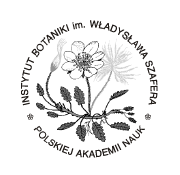 INSTYTUT CHEMII FIZYCZNEJ PAN
INSTYTUT CHEMII FIZYCZNEJ PAN
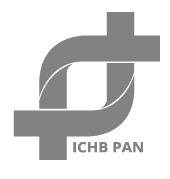 INSTYTUT CHEMII ORGANICZNEJ PAN
INSTYTUT CHEMII ORGANICZNEJ PAN
 INSTYTUT FILOZOFII I SOCJOLOGII PAN
INSTYTUT FILOZOFII I SOCJOLOGII PAN
 INSTYTUT GEOGRAFII I PRZESTRZENNEGO ZAGOSPODAROWANIA PAN
INSTYTUT GEOGRAFII I PRZESTRZENNEGO ZAGOSPODAROWANIA PAN
 INSTYTUT HISTORII im. TADEUSZA MANTEUFFLA POLSKIEJ AKADEMII NAUK
INSTYTUT HISTORII im. TADEUSZA MANTEUFFLA POLSKIEJ AKADEMII NAUK
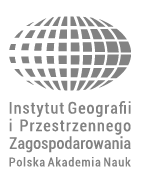 INSTYTUT JĘZYKA POLSKIEGO POLSKIEJ AKADEMII NAUK
INSTYTUT JĘZYKA POLSKIEGO POLSKIEJ AKADEMII NAUK
 INSTYTUT MATEMATYCZNY PAN
INSTYTUT MATEMATYCZNY PAN
 INSTYTUT MEDYCYNY DOŚWIADCZALNEJ I KLINICZNEJ IM.MIROSŁAWA MOSSAKOWSKIEGO POLSKIEJ AKADEMII NAUK
INSTYTUT MEDYCYNY DOŚWIADCZALNEJ I KLINICZNEJ IM.MIROSŁAWA MOSSAKOWSKIEGO POLSKIEJ AKADEMII NAUK
 INSTYTUT PODSTAWOWYCH PROBLEMÓW TECHNIKI PAN
INSTYTUT PODSTAWOWYCH PROBLEMÓW TECHNIKI PAN
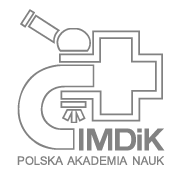 INSTYTUT SLAWISTYKI PAN
INSTYTUT SLAWISTYKI PAN
 SIEĆ BADAWCZA ŁUKASIEWICZ - INSTYTUT TECHNOLOGII MATERIAŁÓW ELEKTRONICZNYCH
SIEĆ BADAWCZA ŁUKASIEWICZ - INSTYTUT TECHNOLOGII MATERIAŁÓW ELEKTRONICZNYCH
 MUZEUM I INSTYTUT ZOOLOGII POLSKIEJ AKADEMII NAUK
MUZEUM I INSTYTUT ZOOLOGII POLSKIEJ AKADEMII NAUK
 INSTYTUT BADAŃ SYSTEMOWYCH PAN
INSTYTUT BADAŃ SYSTEMOWYCH PAN
 INSTYTUT BOTANIKI IM. WŁADYSŁAWA SZAFERA POLSKIEJ AKADEMII NAUK
INSTYTUT BOTANIKI IM. WŁADYSŁAWA SZAFERA POLSKIEJ AKADEMII NAUK







